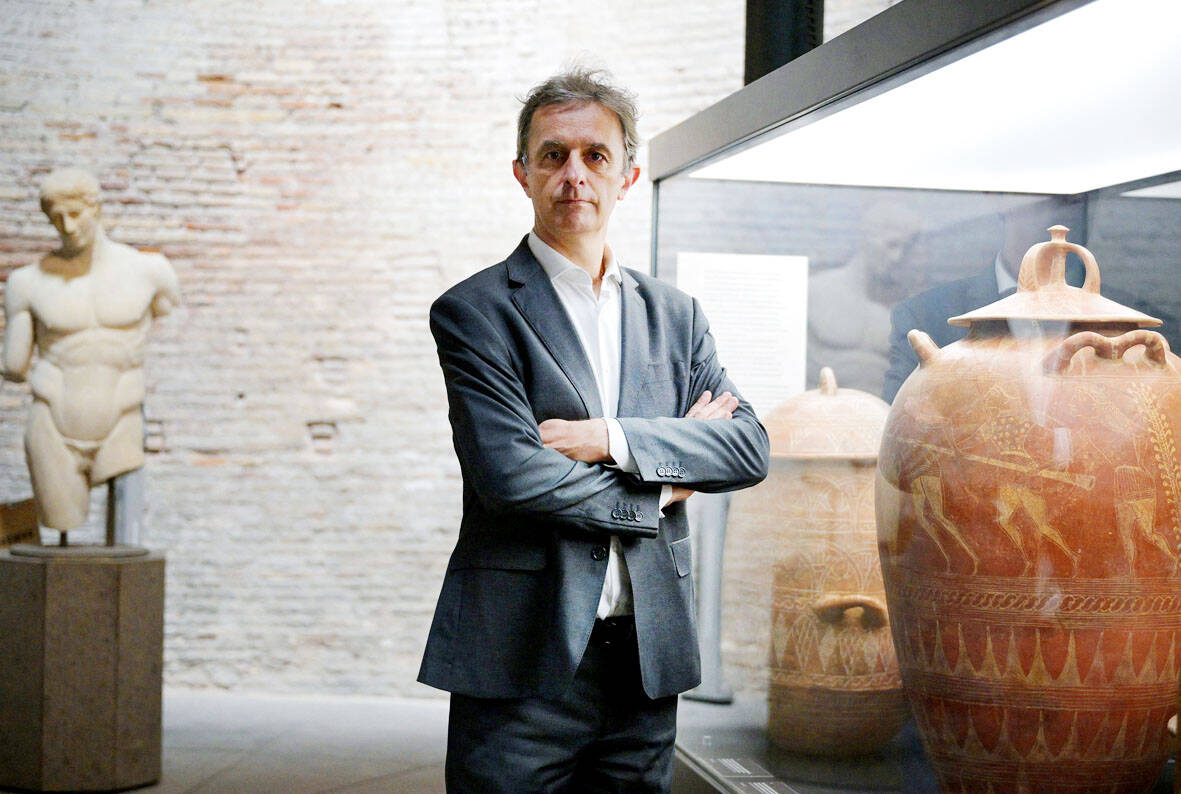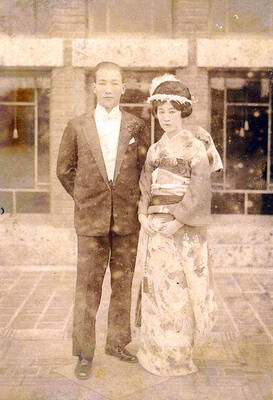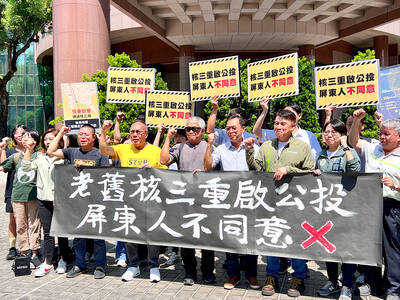Antiquities recovered after being looted in Italy and sold on the global black market have found their sanctuary in the heart of Rome.
The “Museum for Rescued Art” is housed in a spectacular hall within the majestic Diocletian Baths, ancient Rome’s largest bath complex.
Currently holding dozens of amphorae, coins and busts, the museum stages rotating exhibits aimed not just at showcasing the art, but recounting how it was rescued.

Photo: AFP
Some of the antiquities were looted during illegal excavations of Etruscan necropolises north of Rome or from secret digs in the southern region of Puglia.
Many were smuggled out of Italy via a network of antique dealers and sold to foreign collectors.
Some of the objects highlighted were “resold or donated to major American museums” in the past, said museum director Stephane Verger, a French archaeologist.
Italy has waged legal and diplomatic battles lasting years as it seeks to recover its stolen artworks and plundered archaeological artefacts.
Two years ago it scored a major success.
The prestigious Getty Museum in Los Angeles agreed to return to Italy a group of three life-size terracotta statues known as Orpheus and the Sirens dating from the fourth century BC, acknowledging they had been illegally excavated. They, too, made their way to the Museum for Rescued Art, part of a thematic exhibit on Italian terracotta. “We don’t want to be like those big museums and simply show beautiful works,” Verger said.
“It is an educational museum which shows all the dangers of international trafficking.”
But the works do not stay here.
“After being exhibited for some time, they are repatriated to other Italian museums,” Verger said — precisely where they should have been all along had they not been smuggled out of the country.
GRAVE ROBBERS
Illegal excavations, such as when ancient burial sites are targeted by tombaroli, or grave robbers, are damaging in two key ways.
Archaeologists are deprived of the looted objects themselves, but also key information on how, where and when they were found.
“Clandestine excavations have a very negative impact on our knowledge of ancient cultures,” Verger said.
The museum, which opened two years ago, is temporarily closed due to construction works ahead of the 2025 Jubilee Year, in which millions of Catholic pilgrims are expected to visit Rome.
But when it re-opens, could it welcome The Athlete of Fano, a splendid ancient Greek statue in bronze that has been at the Getty for nearly 50 years? The European Court of Human Rights ruled earlier this month in favor of Italy’s request to take back the statue, known in the US as Victorious Youth.
But Getty contests the decision and the case could be referred to the court’s Grand Chamber for further examination.
Discovered 60 years ago by Italian fishermen off the Adriatic coast of Fano in central Italy, the statue is believed to have been immediately sold, changing hands several times before resurfacing on the art market in 1974.
The statue, which depicts a nude athlete with a wreath atop his head, was acquired from a German dealer by the J. Paul Getty Museum for nearly US$4 million.
As to whether the athlete will make a stopover to Rome’s museum, Verger said that “nothing is certain.”

Sept. 1 to Sept. 7 In 1899, Kozaburo Hirai became the first documented Japanese to wed a Taiwanese under colonial rule. The soldier was partly motivated by the government’s policy of assimilating the Taiwanese population through intermarriage. While his friends and family disapproved and even mocked him, the marriage endured. By 1930, when his story appeared in Tales of Virtuous Deeds in Taiwan, Hirai had settled in his wife’s rural Changhua hometown, farming the land and integrating into local society. Similarly, Aiko Fujii, who married into the prominent Wufeng Lin Family (霧峰林家) in 1927, quickly learned Hoklo (commonly known as Taiwanese) and

The low voter turnout for the referendum on Aug. 23 shows that many Taiwanese are apathetic about nuclear energy, but there are long-term energy stakes involved that the public needs to grasp Taiwan faces an energy trilemma: soaring AI-driven demand, pressure to cut carbon and reliance on fragile fuel imports. But the nuclear referendum on Aug. 23 showed how little this registered with voters, many of whom neither see the long game nor grasp the stakes. Volunteer referendum worker Vivian Chen (陳薇安) put it bluntly: “I’ve seen many people asking what they’re voting for when they arrive to vote. They cast their vote without even doing any research.” Imagine Taiwanese voters invited to a poker table. The bet looked simple — yes or no — yet most never showed. More than two-thirds of those

In the run-up to the referendum on re-opening Pingtung County’s Ma-anshan Nuclear Power Plant last month, the media inundated us with explainers. A favorite factoid of the international media, endlessly recycled, was that Taiwan has no energy reserves for a blockade, thus necessitating re-opening the nuclear plants. As presented by the Chinese-language CommonWealth Magazine, it runs: “According to the US Department of Commerce International Trade Administration, 97.73 percent of Taiwan’s energy is imported, and estimates are that Taiwan has only 11 days of reserves available in the event of a blockade.” This factoid is not an outright lie — that

The People’s Republic of China (PRC) yesterday paraded its military hardware in an effort to impress its own population, intimidate its enemies and rewrite history. As always, this was paced by a blizzard of articles and commentaries in the media, a reminder that Beijing’s lies must be accompanied by a bodyguard of lies. A typical example is this piece by Zheng Wang (汪錚) of Seton Hall in the Diplomat. “In Taiwan, 2025 also marks 80 years since the island’s return to China at the end of the war — a historical milestone largely omitted in official commemorations.” The reason for its